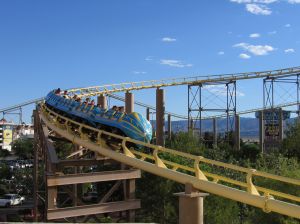For decades, employees at auto plants have been losing their jobs due to robots replacing human workers on the assembly line. While the biggest fear is that these robots will take over most or all of the automotive industry jobs, it seems these robots can also be dangerous to work around in some cases.
 According to a recent news feature from Fortune, a robot at a Volkswagen factory killed a worker. Authorities say a technician was working with another employee to install a production robot when the robot struck him in the chest and pushed him against a metal plate, where he suffered significant injuries and later died.
According to a recent news feature from Fortune, a robot at a Volkswagen factory killed a worker. Authorities say a technician was working with another employee to install a production robot when the robot struck him in the chest and pushed him against a metal plate, where he suffered significant injuries and later died.
The company said it normally places a safety cage around the robots, so human workers cannot be injured in accidents like this one, but since the workers were servicing the robot itself, the worker was standing on the inside of the cage at the time of the fatal on-the-job accident. There are, however, robots which work alongside human employees on the assembly line, but these are lightweight robots the company claims are not likely to cause this type of injury to an employee. While this particular accident occurred at a German factory, the company said it plans to use more of these robots in all production centers across the world and plans to replace many of the retiring Baby Boomer employees with robots, because they are much more cost effective than human workers. Continue reading
 Massachusetts Workers Compensation Lawyers Blog
Massachusetts Workers Compensation Lawyers Blog












